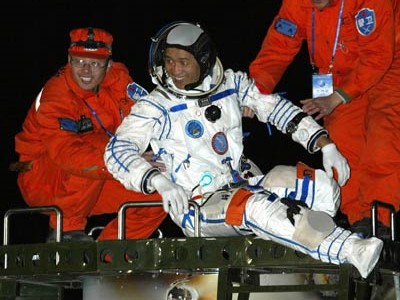

China is preparing for a moon-sampling mission slated to go ahead in November, a breakthrough for China’s Aerospace Science and Technology Corporation (CASC), which will see its first automated moon surface sampling, first unmanned docking as well as first moon take-off.
“With a weight of 8.2 tons, the lunar probe is comprised of four parts: an orbiter, a returner, an ascender and a lander,” said Ye Peijian, an aerospace expert and consultant for the mission.
The Chang’e-5 lunar probe is to be carried out of Earth’s atmosphere by a heavy lift rocket and, after touch down, will deploy its moon lander for sample collection. The samples will be taken up by the ascender module which will then take off and meet up with the orbiter. The final stage will see the samples transferred to a return craft in preparation for heading home.
“The development of Chang’e-5 has entered the end of its flight model phase, and relevant work is proceeding smoothly,” reads a statement from CASC.
Chinese ambitions for space exploration have quickly ramped up over recent years. In October of this past year, the CASC made its first successful docking of the Shenzhou-11 spacecraft with China’s space lab, the Tiangong-2 (which means “heavenly palace”), in orbit since September, 2016, and constructed to serve as a precursor to a more permanent space station planned for 2023. The Shenzhou-11 brought two astronauts safely to the Tiangong-2 and back again to Earth.
CASC also recently announced its plans to land a probe on the moon’s far side by late 2018. Added to the country’s stated aim of sending a probe to Mars by 2020, the result is a significant speed-up in China’s space exploration program. “To explore the vast cosmos, develop the space industry and build China into a space power is a dream we pursue unremittingly,” said a white paper in December on the country’s space strategy.
Even with NASA currently showing more interest in asteroids and manned missions to Mars than in Earth’s moon, our one and only orbital body is set to become a popular destination this year, thanks in most part to Google’s Lunar X Prize which has produced five legitimate teams, all having secured contracts to launch spacecraft in 2017.
One of a series of competitions aimed at pushing innovation in areas where start-up capital may be harder to find, the Lunar X Prize is tasking privately-funded teams to: (a) successfully place a spacecraft on the moon’s surface, (b) travel 500 metres in a rover and (c) transmit HD video of the event back to Earth. The first team to complete the mission gets $20 million in prize money, while the second and third place teams will get $5 million each. “The Moon is not only our nearest planetary neighbour, but it is also the gateway to the rest of the universe,” reads a statement from Lunar X.
The five competing teams are SpaceIL from Israel, Moon Express from the United States, Team Indus from India, Hakuto from Japan and Synergy Moon, an international partnership.
Leave a Reply
You must be logged in to post a comment.




 Share
Share Tweet
Tweet Share
Share




Comment